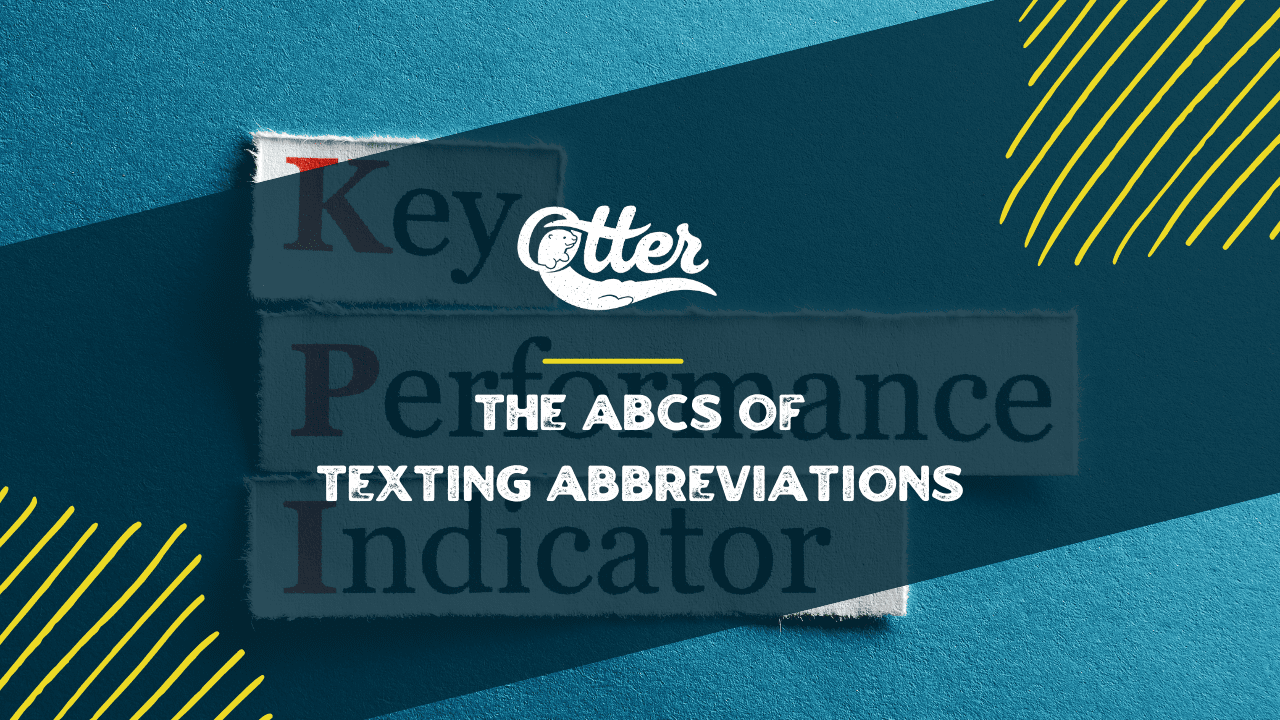Have you ever hit the 160 character limit when texting a client or team member? It’s frustrating, right? Texting abbreviations can be your secret weapon to convey more with less. In a world where brevity is king, these shortcuts aren’t just for teens—they’re vital business tools. Keep reading to find out which abbreviations to use, when to use them, and when to steer clear.
50 Common Text Abbreviations and Acronyms for Business SMS
Here are common text message abbreviations and acronyms that can prove useful for your business texting, whether texting a client, a teammate, or a partner:
General Communication
- BRB – Be Right Back
- IMO/IMHO – In My Opinion/In My Humble Opinion
- IDK – I Don’t Know
- FYI – For Your Information
- SMH – Shaking My Head
- TBA – To Be Announced
- TBD – To Be Determined
- DM – Direct Message
- NSFW – Not Safe For Work
- TL;DR – Too Long; Didn’t Read
Sales and Marketing
- B2B – Business to Business
- B2C – Business to Customer
- ROI – Return on Investment
- CTA – Call to Action
- MRR – Monthly Recurring Revenue
- NPS – Net Promoter Score
- LTV – Lifetime Value
- CPC – Cost Per Click
- CTR – Click-Through Rate
- PPC – Pay Per Click
- CPM – Cost Per Mille (Thousand)
- SEO – Search Engine Optimization
- UVP – Unique Value Proposition
- FOMO – Fear of Missing Out
Operations and Customer Service
- FAQ – Frequently Asked Questions
- EOD – End of Day
- ETA – Estimated Time of Arrival
- KPI – Key Performance Indicator
- CRM – Customer Relationship Management
- OOO – Out of Office
- POC – Point of Contact
- SLA – Service Level Agreement
- SOP – Standard Operating Procedure
- QC – Quality Control
Tech and Development
- SaaS – Software as a Service
- API – Application Programming Interface
- HTML – HyperText Markup Language
- CSS – Cascading Style Sheets
- FTP – File Transfer Protocol
- VPN – Virtual Private Network
- CMS – Content Management System
Email and Documentation
- BCC – Blind Carbon Copy
- CC – Carbon Copy
- RFP – Request For Proposal
- TOS – Terms of Service
- UX/UI – User Experience/User Interface
- WFH – Work From Home
- ICYMI – In Case You Missed It
- SWOT – Strengths, Weaknesses, Opportunities, Threats
- YOY – Year Over Year
Should Businesses Use Abbreviations?
As businesses increasingly turn to SMS marketing and other quick forms of communication, the question arises: should abbreviations be part of the corporate lexicon? The answer isn’t a simple yes or no; it’s more nuanced than that. Here’s a breakdown to help you decide.
| Pros | Cons |
| Abbreviations save time and are especially useful in SMS marketing, where you’re limited to 160 characters. | Misuse can lead to misunderstandings if the abbreviation is not universally understood. |
| Enhances the readability of messages by cutting out unnecessary words. | In formal settings, abbreviations can appear unprofessional or too casual. |
| Makes your business appear more relatable and less formal, depending on your audience. | Some industries, like healthcare or legal services, may have regulations against using abbreviations. |

How to Use Abbreviations and Acronyms in a Business Setting
So, you’ve got your list of 50 handy abbreviations and acronyms. But how do you use them effectively without causing confusion or appearing unprofessional? Here’s a quick guide to the dos and don’ts of incorporating these shorthand terms into your business SMS and other communications.
The Do’s
- Know Your Audience: Before using abbreviations, ensure your audience is familiar with them. For instance, tech-savvy teams will likely understand terms like “API” or “SaaS,” but these might confuse others.
- Keep It Contextual: Use abbreviations that fit the context. “ROI” and “KPI” are great for sales discussions but might not be relevant in a customer service chat.
- Test the Waters: If you’re unsure about using an abbreviation, especially with a new client or external partner, you can introduce it in its full form first. For example, write “Return on Investment (ROI)” initially and use “ROI” thereafter.
- Be Consistent: Once you start using an abbreviation, use it consistently throughout the conversation.
The Don’ts
- Avoid Overuse: Using too many abbreviations can be hard to read and may come off as unprofessional. Use them sparingly for maximum impact.
- Skip Formal Settings: In formal emails or official documents, it’s best to avoid abbreviations. Full terms are more appropriate here.
- Don’t Assume: Never assume that everyone knows what an abbreviation means. When in doubt, spell it out.
- Steer Clear of Sensitive Topics: For serious or sensitive discussions, especially those involving legal or financial matters, it’s safer to use full terms to avoid misunderstandings.
Real-World Examples: 10 Sample SMS Marketing Messages with Abbreviations
Wondering how to incorporate commonly used abbreviations into your SMS marketing strategy? Here are 10 sample messages that show you how to effectively abbreviate words or phrases. These examples often use shortened versions of phrases to save time and keep within the 160-character limit for SMS.
General Communication
- Hi {{First Name}}, BRB with the info you requested. Thanks for your patience!
- FYI, our weekend sale starts tomorrow. Don’t miss out!
Sales and Marketing
- {{First Name}}, ROI on our new product is impressive. Let’s discuss how it can benefit you.
- Last chance to act on our CTA! Sale ends in 3 hrs.
Operations and Customer Service
- {{First Name}}, your package’s ETA is 2 PM today. Thank you for shopping with us!
- EOD update: All tasks completed. Great job, team!
Tech and Development
- {{First Name}}, the new SaaS tool is ready for testing. Please check it out.
- Quick heads-up: Our API integration is complete.
Email and Documentation
- {{First Name}}, please find the TOS attached. Let us know if you have questions.
- ICYMI, the meeting minutes have been emailed to you.
Conclusion: Make Every Character Count
Time is money, and clarity is king. Texting abbreviations aren’t just trendy slang; they’re practical tools that can help you communicate more efficiently, especially when you’re confined to the 160-character limit of an SMS. From understanding the commonly used abbreviations to knowing when and how to use them, this guide has equipped you with the knowledge you need to navigate the world of business texting like a pro.Ready to put this newfound knowledge into action? We invite you to try OtterText for free and experience the ease of sending personalized, relevant, engaging, and relatable SMS messages. With OtterText, you can make every character count and every message matter.



